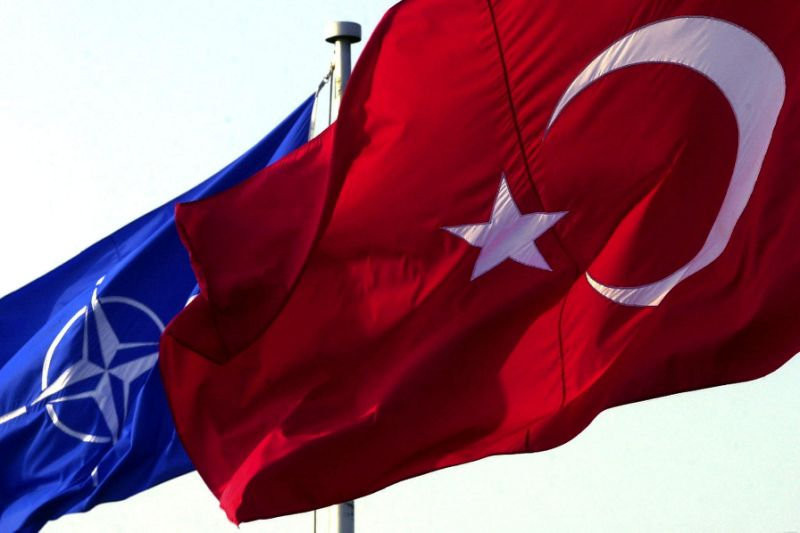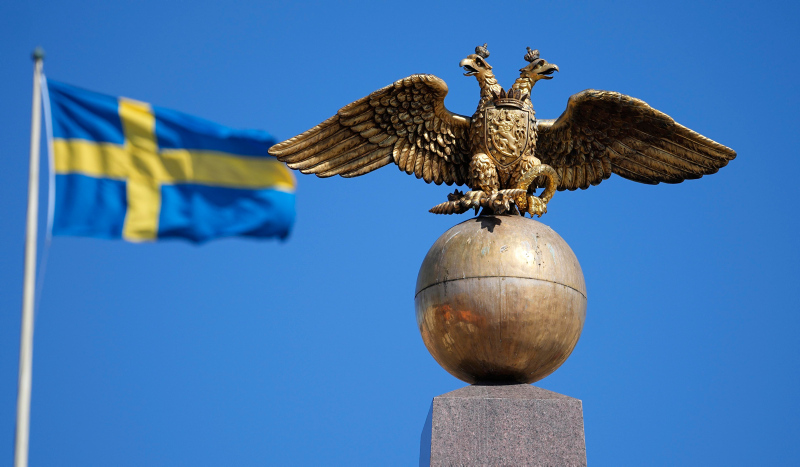As the war in Ukraine has led Finland and Sweden to do a U-turn and seek membership in the NATO alliance, the road to membership that lies ahead for them would normally entails a long, multi-step process.
In order for NATO to accept new members -with Bosnia and Herzegovina, Georgia, and Ukraine now similarly seeking membership- various conditions must be fulfilled and legal processes completed.
NATO was founded in 1949, after the end of World War II, by 12 countries: the US, UK, Canada, France, Italy, Netherlands, Norway, Portugal, Luxembourg, Iceland, Denmark, and Belgium. Turkey, along with Greece, followed in 1952, and this February Turkey marked its 70th anniversary of joining the alliance.

In the 73 years since the alliance's founding, the number of members grew from 12 to 30, through eight expansion waves.
The first was Turkey and Greece. In 1955, then-West Germany joined the NATO ranks, and in 1982, Spain gained membership.
With the 1999 post-Cold War accession of the Czech Republic, Hungary, and Poland, the number of members grew to 19.
2004 saw Romania, Slovakia, Slovenia, and Bulgaria join, along with the Baltic states of Latvia, Lithuania, and Estonia.
Albania and Croatia became member states in 2009, Montenegro in 2017, and finally North Macedonia in 2020.
North Macedonia's membership only became possible after the resolution of a longstanding name dispute with Greece.
For many years, Greece blocked its NATO membership under the name "Macedonia," and only assented when the country officially became North Macedonia.
With the name issue resolved in 2018, Greece lifted its veto and North Macedonia was invited to begin membership talks with NATO. North Macedonia was officially admitted as a member in March 2020.
In these enlargement waves, some countries announced that they wanted to become NATO members, but their quests have yet to bear fruit: Bosnia and Herzegovina, Ukraine, and Georgia.
At the 2008 NATO summit in Romania's capital Bucharest, it was agreed that Georgia and Ukraine would become NATO members in the future, but neither country was given a date.
In 2010, the Balkan nation of Bosnia and Herzegovina was invited to be included in NATO's Membership Action Plan.
For decades, Sweden and Finland took a neutral foreign policy posture in the region, but the ongoing Russia-Ukraine war that started on Feb. 24 triggered a shift in their approach, with both the public and most politicians favoring joining the NATO alliance.
Finland has a border of 1,500 kilometers (932 miles) with Russia. Fighting the Soviet Union in World War II, Finland lost about 10% of its territory, relocated 11% of its population, and paid about €5 billion ($5.24 billion) in war reparations at today's rates.
After these losses, Finland's agreement with the Soviet Union caused the country to be militarily non-aligned for many years. After the 1991 collapse of the Soviet Union, Finland became a member of the EU and switched to the euro currency, but did not join NATO.

For many years, only about 20% of the Finnish public wanted NATO membership. However, after Russia's attack on Ukraine on Feb. 24, the percentage of Finns supporting NATO membership soared to over 70%.
Following Finland's change of heart, its neighbor Sweden decided to apply for NATO membership.
Having fought with Russia in 1809 and losing Finland to Russia in that war, Sweden has not met Russia on the battlefield for nearly 200 years. The country remained neutral during both World War II and during the Cold War.
However, documents disclosed by former US intelligence employee Edward Snowden revealed that Sweden had engaged in secret collusion with the US in the 1950s.
As part of their cooperation, the US reportedly pledged to help if Sweden was attacked by Russia.
In Finland and Sweden's current about-face in seeking NATO membership, Turkey's objections over the countries' failure to take a strong, clear stance against terrorism have come to the fore.
For any new member to join NATO, all of its members must agree unanimously, including Turkey.
Over the last five years, both Sweden and Finland have failed to agree to Turkey's requests for the extradition of dozens of terrorists.
Last Friday, Turkish President Recep Tayyip Erdoğan said that certain Scandinavian countries effectively act as "guesthouses" for terrorist groups.
Turkish Foreign Minister Mevlut Cavusoglu also expressed reservations over Finland and Sweden joining NATO, citing their support for the terrorist group YPG/PKK.
In its more than 35-year terror campaign against Turkey, the PKK-recognized as a terrorist group by the US, EU, and Turkey-has been responsible for the deaths of over 40,000 people, including women, children, and infants. The YPG is the PKK's Syrian offshoot.
Based on Article 10 of the alliance's charter, NATO follows an "open door" policy for countries seeking membership.
The article says that countries that are party to the founding Washington Treaty can invite any European country to join the alliance in order to contribute to the security of the North Atlantic region.
But in order for a country to join NATO, unanimous approval is required, which equals the approval of all 30 existing allied countries.

NATO membership normally requires a long process. For this, a multi-stage process is required to be completed.
Accordingly, when a country seeks to join the alliance, NATO sends an official invitation to that country. After that, a seven-step participation process begins.
In the first step, NATO experts and representatives of the invited country meet in Brussels and hold talks. In these meetings, it is discussed whether the invited country meets the political, legal, and military requirements of NATO, and whether it can fulfill the economic, military, legal, political and intelligence obligations of NATO membership. According to these negotiations, it is determined whether the invited country will reform to meet NATO terms and standards.
For step two, the invited country sends an official letter of intent to the NATO secretary-general and declares that it accepts the obligations and commitments of NATO membership. If reforms are to be made, a calendar of reforms is also laid out in this letter.
For step three, NATO prepares additional accession protocols to the Washington Treaty. Thus, the founding agreement of the alliance is, in a sense, updated. These protocols are signed by NATO countries.
For step four, the protocols must be ratified by NATO member states in line with their national laws and procedures. The approval process differs from country to country. For example, a two-thirds vote of the Senate is required for approval in the US, while a formal vote in the UK parliament is not required.
For step five, all member states, after completing their ratification processes, issue a notification to the US-which hosts the treaty-that they have accepted the protocols that envisage the accession of the new member state.
When all these stages are completed in step six, the NATO secretary-general invites the new member to join the alliance.
Finally, the new member completes its own national legal process and submits its accession document to the US, which has kept the Washington Treaty, and becomes a NATO member.
Last month, NATO Secretary-General Jens Stoltenberg said that "if they decide to apply, Finland and Sweden will be warmly welcomed, and I expect that process to go quickly," but it is unclear how abbreviated the process could be, especially as other prospective members had to work for years before finally joining the alliance.